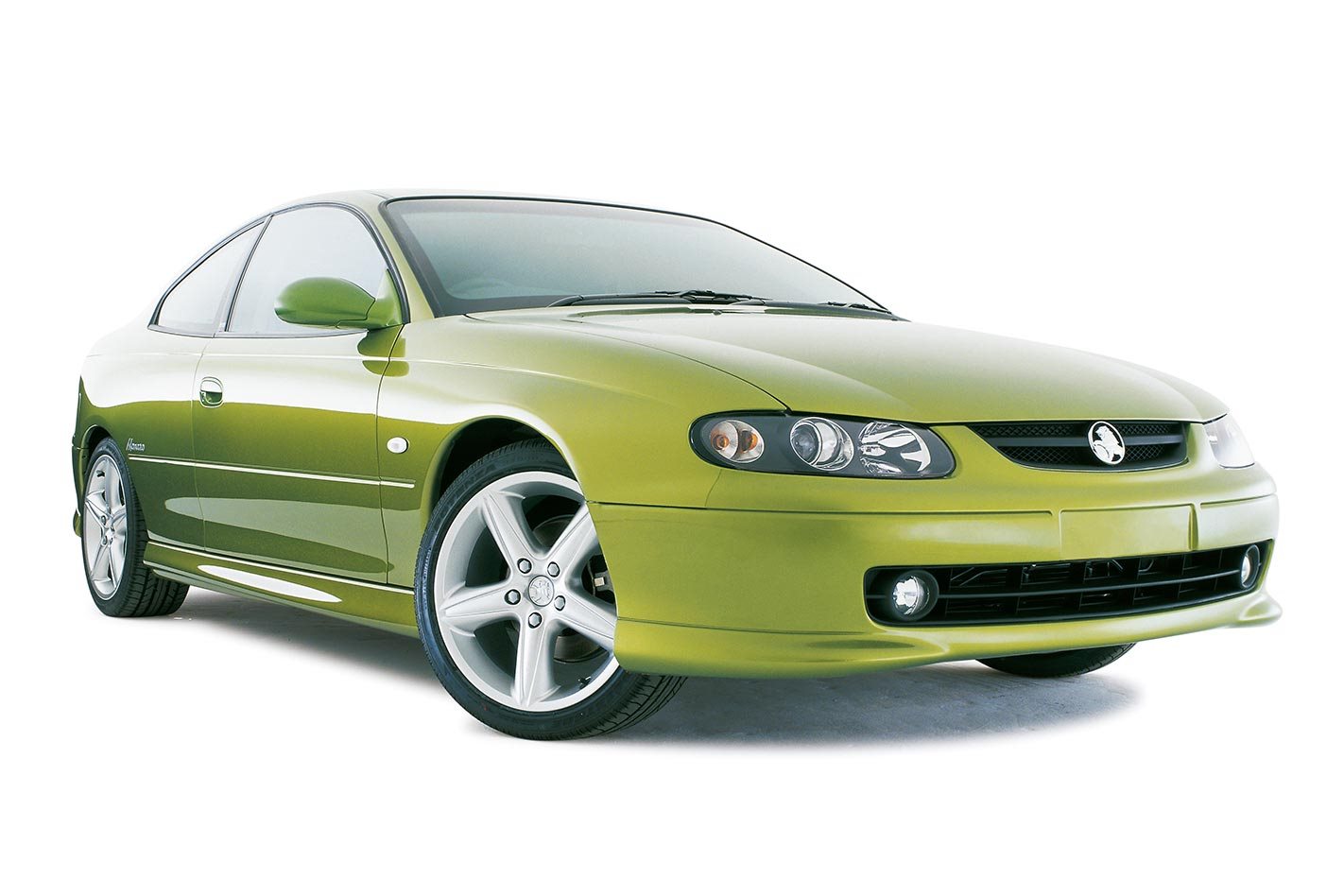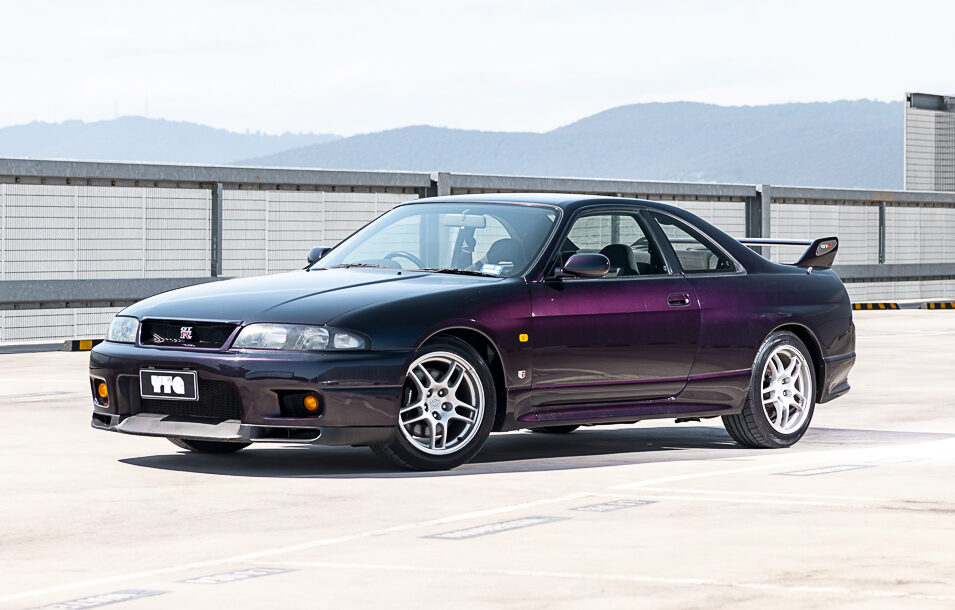Looking back from an era on the cusp of large-scale electrification, the Holden V2-VZ Monaro (2001-06) seems like a dream. A large two-door coupe almost exclusively V8-powered, born in a Melbourne design studio determined to match the best in the world, fuelled by the enthusiasm of an Australian public no longer hindered by the cultural cringe.
What we didn’t know then is that the V2 Monaro marked a pivotal moment in our car culture – the beginning of the greatest purple patch in Aussie automotive history, but also the beginning of the end…
The modern Monaro’s rebirth narrative has been told many times, but it’s worthy of a recap. With work on the ’97 VT Commodore well underway, and its “luscious surfaces” naturally lending themselves to a coupe, senior designer Peter Hughes is nudged by Holden’s chief designer Mike Simcoe to do a proper sketch of a coupe version. And so the oldest surviving image of a two-door VT – dated 1994 – is born.
Some years later, with the coupe’s creative seed well and truly planted, Simcoe completes a 30-percent-scale tape drawing of the two-door at home in his spare time, defining the coupe’s proportion. A same-size clay model follows back in the design studio before work begins in secret on a full-size concept car with the support of Holden’s head of engineering, Tony Hyde, who makes the funds available to complete the project.
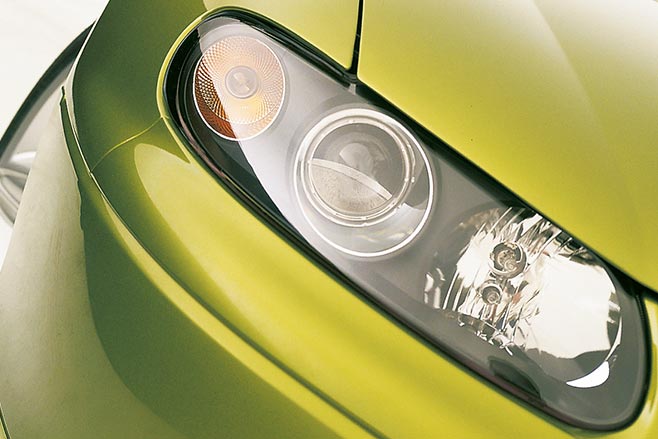
The ‘Concept Coupe’, as it becomes known, is never meant for a public audience – it was an ‘internal design study’, completed after-hours by designers volunteering their time. But Simcoe and his department treat it just like a production car and when a few key members of management see it – and fall in love with it – Concept Coupe gathers momentum.
Three weeks before the 1998 Sydney Motor Show, Simcoe finally reveals the bodyshell to Holden’s then-MD, American Jim Wiemels, who agrees it would be a worthy addition to Holden’s show stand and its 50th anniversary celebrations. And when the covers do come off on October 15, there’s uproarious applause … from the journos!
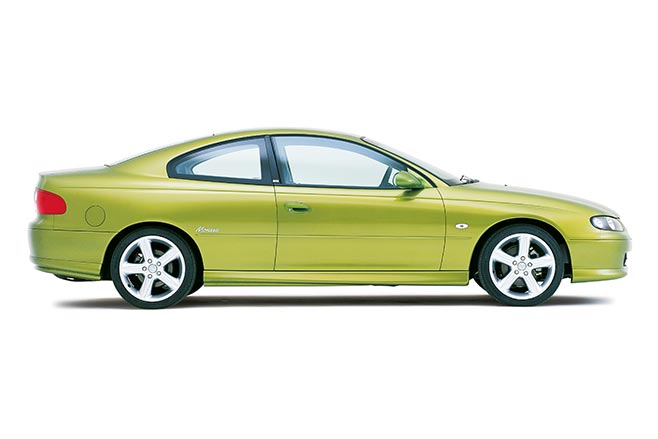
But no one predicted just how nuts the public would go for it. Concept Coupe almost instantly becomes ‘the new Monaro’ and by the end of the show, Holden dealers are already receiving orders. A year later, the company confirms the Commodore two-door is production-bound. Then, in December 2000, Holden announces that a ‘Monaro’ will again grace its showrooms.
Unlike the original Monaro coupes (1968-76), which are held in high regard today but whose sales (and values) tapered off after the initial fervour, the V2-VZ Monaro never really lost its lustre. It’s been treasured from the start.
In its first full year (2002), Holden shifted 4274 examples – more than 90 percent of which were the 225kW/460Nm 5.7-litre Gen III V8, featuring either a Borg Warner T56 six-speed manual or GM’s own 4L60E four-speed automatic, each costing $56,990 (or around $4500 more than a VX II Calais V8 sedan).
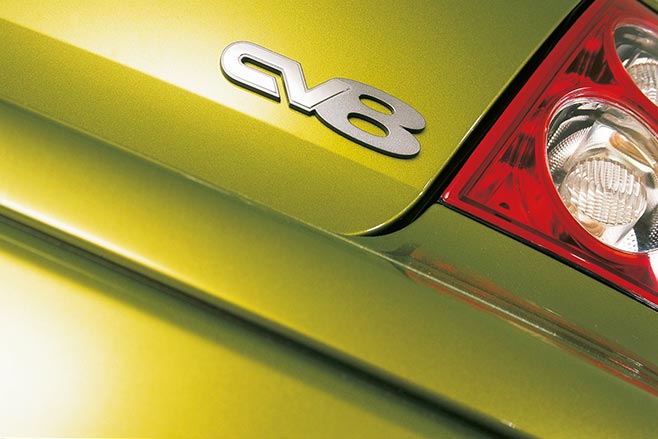
To lower the entry price, Holden also offered a Monaro CV6 range starter for $47,990, though no amount of cost saving could make up for its gruff, auto-only 171kW/375Nm 3.8-litre supercharged V6, which drank premium juice and was barely any thriftier than the V8. Holden dumped it after 18 months.
As with the original Monaros, updates happened quickly with the V2, yet the modern Monaro’s subtly menacing form was never messed with – not for a few years, at least.
The ’01 Monaro already packed the best Holden could offer, including the new-generation column stalks and ‘toe-control link’ rear suspension that had just debuted on the VX Series II Commodore. But a new air intake gave it more V8 rumble, a more rigid steering system with a 13-percent slower ratio improved weighting consistency and response, and it scored completely retuned suspension.
Combined with a stronger body structure (23 percent in bending, five percent in torsional stiffness) and a lower centre of gravity, these alterations made the V2 Monaro the best-handling Commodore to date … even if the overall dynamics still lacked finesse. As did the brakes. And the transmissions. But what remains absolutely note-perfect to this day is the way the Monaro looks.
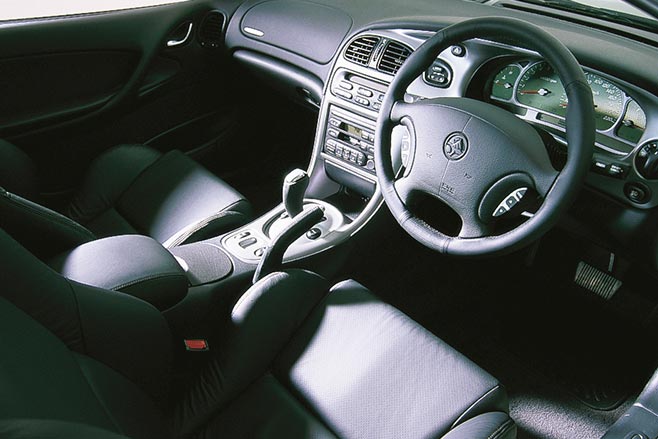
Moving the Commodore’s rear pillars inwards gifted the Monaro gorgeous proportion. If the front was conservatively handsome then the rear haunches were borderline voluptuous – svelte but muscular, yet exuding refined confidence. And the V2’s minimal embellishment only serves to highlight the perfection of its form. It’s a rare combination – understated intimidation.
The detailing of the V2 Monaro also stands up to scrutiny. Its classy projector headlights, stove-burner tail-lights, artful badgework and imposing ex-HSV alloys made a grand statement in 2001. And nearly 20 years later, it’s the original that best encapsulates the “less is more” aesthetic that Mike Simcoe, Peter Hughes, Richard Ferlazzo and all Holden’s talented ‘golden age’ designers were aiming for.
While the ‘Series II’ update (December ’02) introduced new flat-faced, five-spoke 18s that Simcoe reputedly wanted from the start, as well as more grunt for the V8 (235kW/465Nm) and a niftier, classier steering wheel, the jury is still out on whether its new dashboard (shared with Holden’s VY Calais) has the character of the VT-sourced version. There’s something about the original, along with brightly coloured instruments and lurid leather options, that speaks the Monaro’s truth.
The Series II also binned the colour ‘Flame’ – an almost watermelon orange – in favour of the Hendrix-inspired ‘Purple Haze’, which itself lived for barely nine months until ‘Impulse Blue’ replaced it in the Series III update of August ’03. To give Holden credit, it refused to let the Monaro stagnate.
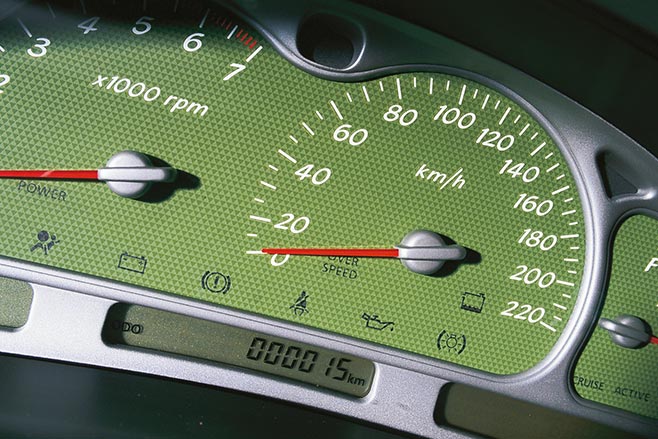
Mirroring the switch to a Chevrolet Monte Carlo-inspired front for the ‘74 HJ Monaro, the final VZ Monaro of 30 years later received several ‘enhancements’ from the US-export model (the left-hook Pontiac GTO, which Holden began producing in mid-2003). Bonnet nostrils, aggressive new bumpers, more angular headlights, meatier alloys, a beefier 260kW/500Nm (ex-GTO) engine tune, extra gauges and a new Turismo Blue hero colour make the VZ stand out like a chomping set of porcelain veneers. But it’s the shorter gear ratios and larger brakes, among other engineering enhancements, that make this the best Monaro to drive (HSV variations aside, of course).
If you want to enjoy a modern Monaro in all its brilliantly packaged glory, however, avoid the VZ. To rationalise build complexity, Holden switched to the US-market fuel tank, which makes room for the VZ’s dual exhaust system but is five litres smaller and stands vertically behind the rear seat (for crash safety), shrinking boot space by 34 percent.
Otherwise, where the latter-day Monaro succeeds by an enormous margin over its predecessors (and indeed pretty much every modern coupe) is in how much space it has – a pair of rear-seat buckets almost as comfortable as the armchairs up front, plus loads of rear legroom, acceptable headroom and a 370-litre boot.
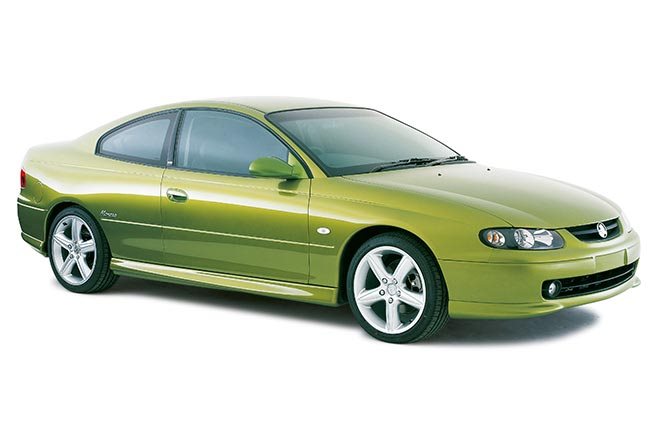
It’s a lasting legacy of Holden design into the 21st century that few large cars on earth can achieve so much for so little – development cost, that is. With the benefit of two decades’ hindsight, it’s remarkable that Holden managed to get the Monaro project up and running at all. In an era where the Japanese were culling iconic coupes left, right and centre, the V2 Monaro found a vein and channelled it.
Across a little over four years, Holden’s domestic V2-VZ Monaro tally reached 11,574 (with HSV contributing another 2788 Coupes, and the main export market – the US – receiving more than 40,000 Pontiac GTOs). That’s an impressive number compared to the production of its HK (8945), HT (14,437), HG (6147), HQ (13,872), HJ (4754) and HX (600) Monaro predecessors. But, sadly, it wasn’t enough to give the stunning VE Coupe 60 concept of 2008 the gift of life.
The V2- VZ Monaro isn’t the last word in mechanical finesse, but it has always delivered so much honest fun. More importantly, for a modern classic, its beauty is truly everlasting.
It has become a cherished halo car for the ingenuity of Aussie engineering. Even today, it rightly stands proud as one of the finest proponents of Australia’s last-ever automotive golden age.
The Monaro’s running gear
Monaro’s all-alloy 5.7-litre Gen III V8 debuted in the VT II Commodore in ’99, and right from the start was never known for its bottom-end shove. It liked to rev! But it also featured moonshot gearing, so driving them hard was almost par for the course.
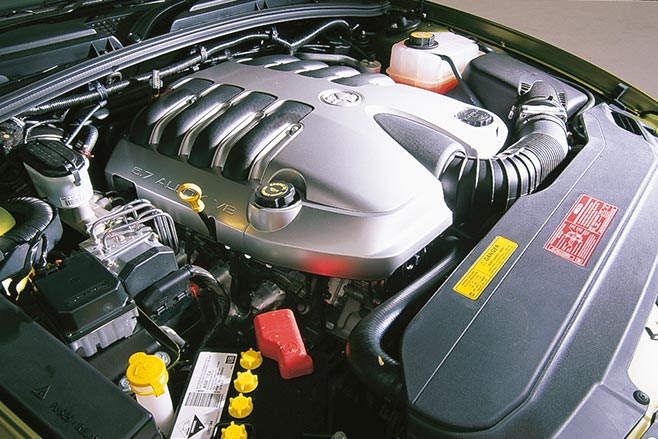
They’re strong donks, provided you keep the oil fresh, though early LS1s suffered from oil leaks, as well as piston slap when cold. Most problems should be sorted by now, but inspect everything and always buy on condition.
Holden V2 Monaro CV8 specs
Engine 5665cc V8 (90°), ohv, 16v Max power 225kW @ 5200rpm Max torque 460Nm @ 4400rpm Transmission 6-speed manual Kerb weight 1640kg L/W/H/WB 4789/1841/1397/2788mm 0-100km/h 6.9sec (tested) Price $56,990 (CV8, new)

